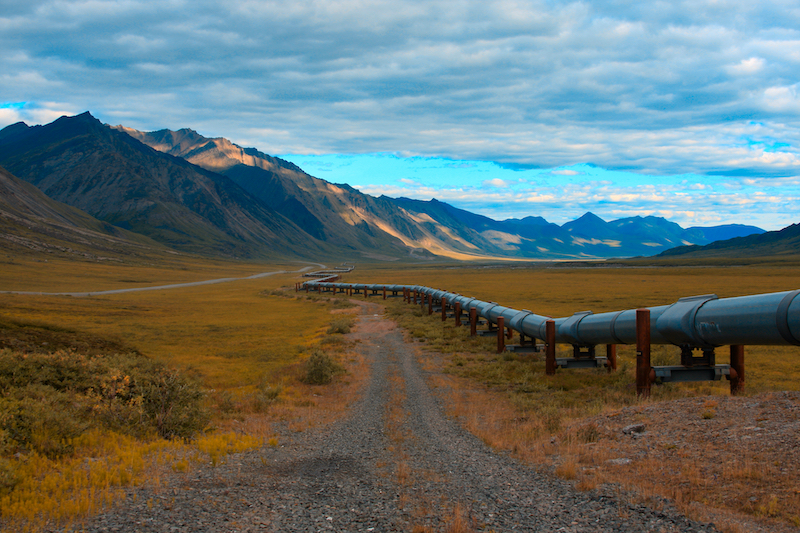ConocoPhillips’ Willow Oil, Gas Drilling Project in Alaska Sparks Green Opposition
(Reuters) — Environmental and climate activists are rallying online against ConocoPhillips’ proposed Willow oil and gas drilling project in Alaska as the administration of U.S. President Joe Biden weighs whether to greenlight the controversial plan.
A petition on Change.org opposing the project has gathered over 2 million signatures, while the hashtag #StopWillow has been trending in social media posts.
Here are some details about the project:
What Is the Willow Project?
The Willow project is a $6 billion proposal from ConocoPhillips' to drill oil and gas in Alaska. It would be located inside the National Petroleum Reserve-Alaska, a 23 million-acre (93 million-hectare) area on the state's North Slope that is the largest tract of undisturbed public land in the United States.
Will It Be Approved?
President Joe Biden's administration said in February it would support a scaled-back version of the project.
The U.S. Bureau of Land Management (BLM) published the project's final environmental review last month, selecting a "preferred alternative" that would include three drill sites and less surface infrastructure than originally proposed. ConocoPhillips had initially wanted to build up to five drill sites, dozens of miles (km) of roads, seven bridges and pipelines.
A final decision could come as soon as this month.
The project had been initially approved by the Trump administration, but a federal judge in Alaska in 2021 reversed that decision, saying the environmental analysis was flawed.
What Is Its Environmental Impact?
According to BLM's analysis, the design it endorsed would reduce the project's impact on habitats for species like polar bears and yellow-billed loons.
But environmental groups remain staunchly opposed, arguing the project conflicts with the Biden administration’s promises to fight climate change and poses a threat to pristine wilderness.
"The Willow project would have a devastating effect on public lands and our climate, and approving it after passing the largest climate bill in history would be a giant step in reverse," the Sierra Club said in a February press release, referring to the Biden administration's Inflation Reduction Act.
"Allowing Willow to move forward will pose a threat to some of Alaska’s last undisturbed wilderness, to the populations of wildlife that call it home, and to the public health of nearby communities and makes it harder to achieve our climate goals. We must end new leasing on public lands and conserving more nature to secure our climate future," it added.
BLM's parent agency, the Interior Department, has emphasized that the selection of the preferred alternative was not a final decision on approval of the project, adding that it had "substantial concerns" about Willow's impact on greenhouse gas emissions and wildlife.
In a statement, ConocoPhillips said the design preferred by BLM represented "a viable path forward" for Willow and said it was ready to begin construction "immediately" upon approval.
Why Is Willow Important for Alaska?
The Willow project area holds an estimated 600 million barrels of oil, or more than the amount currently held in the U.S. Strategic Petroleum Reserve, the country's emergency supply.
The project is important to Alaska's elected officials, who are hoping it will help offset oil production declines in a state whose economy relies heavily on the drilling industry.
ConocoPhillips has said the project would deliver up to $17 billion in revenue for federal and state governments and local Alaska communities.
The Biden administration has also been urging U.S. oil companies to invest in boosting production to help keep consumer energy prices in check.
Related News
Related News

- Keystone Oil Pipeline Resumes Operations After Temporary Shutdown
- Freeport LNG Plant Runs Near Zero Consumption for Fifth Day
- Biden Administration Buys Oil for Emergency Reserve Above Target Price
- Mexico Seizes Air Liquide's Hydrogen Plant at Pemex Refinery
- Enbridge to Invest $500 Million in Pipeline Assets, Including Expansion of 850-Mile Gray Oak Pipeline
- Enbridge Receives Approval to Begin Service on Louisiana Venice Gas Pipeline Project
- U.S. to Acquire 3 Million Barrels of Oil for Emergency Reserve in September
- AG&P LNG Acquires 49% Stake in Vietnam's Cai Mep LNG Terminal
- BP's Carbon Emissions Increase in 2023, Ending Decline Since 2019
- Texas Sues EPA Over Methane Emission Rules for Oil and Gas Sector





Comments